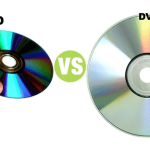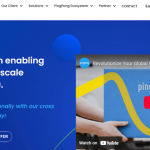Understanding how to track competitors pricing is no longer optional. In today’s hyper-competitive digital landscape, pricing directly influences customer perception, conversion rate, and long-term brand positioning. Whether you’re in e-commerce, SaaS, retail, or service-based industries, keeping an eye on what others charge helps you make smarter, data-backed decisions. And the reality is simple: businesses that consistently monitor and adapt to market pricing trends outperform those that don’t. In this blog, I’ll break down the importance of competitor price tracking, how it works, the tools worth using, and how to build a pricing strategy that actually moves the needle.
Why Tracking Competitor Pricing Matters More Than Ever
Pricing shifts faster than ever due to demand, seasonality, promotions, and algorithm-driven adjustments by major platforms. If you aren’t monitoring the market, you’re making decisions blindly. When you track competitors pricing, you gain clarity into where you stand—whether you’re overpriced, underpriced, or perfectly positioned.
Even a small price difference can push potential buyers toward a competitor, especially in markets where customers compare multiple websites before making a purchase. At the same time, being the cheapest isn’t always the winning strategy. Customers care about perceived value, trust, and consistency. Price tracking helps you find that balance by showing you what the “acceptable range” looks like for your industry.
Understanding Market Positioning Through Pricing
Pricing is one of the strongest signals of your brand’s identity. If you’re consistently higher than competitors, customers expect premium features, better quality, or superior service. If you’re lower, they expect affordability without compromise. But to choose your lane, you need context—pricing intelligence gives you that context.
By monitoring competitors regularly, you can identify patterns:
- Who is targeting budget-conscious customers?
- Who is going premium?
- Who is price-testing aggressively?
- Who changes prices based on events, days, or seasons?
These insights help refine your own strategy so you’re not simply reacting, but proactively positioning your brand.
How Competitor Price Tracking Works
Once you understand why pricing data matters, the next step is learning how the process works. Tracking can be done manually, semi-automatically, or fully automated depending on how many competitors and SKUs you have.
Manual tracking involves checking competitor websites, marketplaces, and ads at specific intervals. It works if you sell only a few products, but it becomes unrealistic as your catalog grows.
Most businesses move to automated or tool-based price tracking because it saves time and captures real-time fluctuations. Tools gather pricing data from multiple sources—websites, online stores, marketplaces, Google Shopping, and even promotional campaigns. The result: an always-updated dashboard showing where your business stands.
When Should You Track Competitors Pricing?
Timing matters. Tracking once a month won’t give you enough data to stay competitive, especially in categories where prices shift frequently. For most industries, weekly or daily tracking is ideal. If you run an e-commerce store in an ultra-competitive category (electronics, beauty, home goods), even hourly monitoring can be beneficial.
Seasonal periods such as holidays, Black Friday, back-to-school, and major industry events also demand more frequent tracking. Competitors push aggressive promotions during these times, and staying updated helps you react strategically rather than emotionally.
What to Look For When Monitoring Competitor Prices
To get real value, don’t just look at the number. Look at the pattern behind it.
Here are the critical factors that can reveal deeper insights:
1. Price Fluctuations Over Time
Tracking how often prices change gives you a sense of competitor behavior. Are they experimenting? Are they matching market leaders? Are they trying to dominate through price cuts?
2. Promotion Strategy
Most companies don’t discount everything at once. They test specific products, offer bundle deals, or run limited-time offers. Understanding these strategies helps you predict future pricing moves.
3. Stock Availability
If a competitor runs out of stock, that’s your opportunity to temporarily increase price or highlight fast delivery.
4. Shipping Costs and Additional Fees
Sometimes the listed price is low, but hidden charges make the total cost higher. Customers notice this, so tracking total checkout cost matters.
5. Why a Price Changed
Not every fluctuation is strategic. Sometimes it’s a shortage, a trend, or even a clearance sale. Identifying the “why” helps you interpret data correctly.
Choosing the Right Tools to Track Competitors Pricing
There are dozens of tools available, but good price-tracking software should give you accurate data, real-time updates, and user-friendly reporting. Some tools are built for e-commerce, others for SaaS or service-focused businesses. The ideal tool should allow you to import your own product list, add competitor URLs, and receive automatic updates.
Look for features like:
- Real-time alerts
- Historical price charts
- Automated match detection
- Mapping products across multiple websites
- Competitor stock monitoring
- Customizable reports for decision makers
Even if you start with a smaller tool, the key is to choose one that aligns with your industry and the scale of your business.
Building a Smart Pricing Strategy Based on Competitor Data
Once you have accurate data, the next step is to turn it into action. Competitor pricing isn’t meant to dictate your prices; it’s meant to guide them.
Here’s how to use the insights effectively:
Position Yourself Clearly
If you want to compete on value, highlight features, quality, and customer experience. If you want to compete on price, ensure your margins can support it.
Avoid a Race to the Bottom
Dropping your price every time a competitor drops theirs will only crush profits. Look at the bigger picture and adjust only when it genuinely benefits your brand.
Bundle and Add Value
Instead of cutting prices, create bundles or add services that increase perceived value without harming margins.
Use Data to Predict Market Movements
Historical pricing charts often show cycles. Use them to anticipate when competitors may launch promotions.
Test Prices Before Making Large Changes
A small price change can lead to big insights. Test different levels, measure conversions, and slowly adjust.
Common Mistakes When Tracking Competitors Pricing
Even with the right tools, many businesses fail to use price data effectively. The biggest mistake is copying competitor prices without analyzing demand, cost structure, and long-term goals. Another common issue is ignoring shipping, seasonal offers, and loyalty programs, all of which influence perceived pricing.
Some businesses also check prices too infrequently, missing critical changes. Others track the wrong competitors—monitoring small sellers who don’t influence the market while ignoring major players who set the standard.
The Future of Pricing Intelligence
With AI-driven analytics, dynamic pricing is becoming mainstream. Large companies already use automated pricing systems that adjust prices based on demand, competition, time of day, and customer behavior. As markets continue to evolve, manual price tracking will soon be outdated. Businesses that adopt intelligent pricing strategies early will always stay ahead.
Final Thoughts
Learning how to track competitors pricing is one of the most important steps for staying relevant in your industry. It gives you clarity, reveals market opportunities, and ensures your pricing strategy aligns with customer expectations and competitive dynamics. Whether you’re a small business or a growing brand, consistent pricing intelligence helps you make better decisions and stay ahead in a fast-moving landscape. When you understand the market, you can position yourself with confidence—and that’s exactly what leads to long-term growth.







